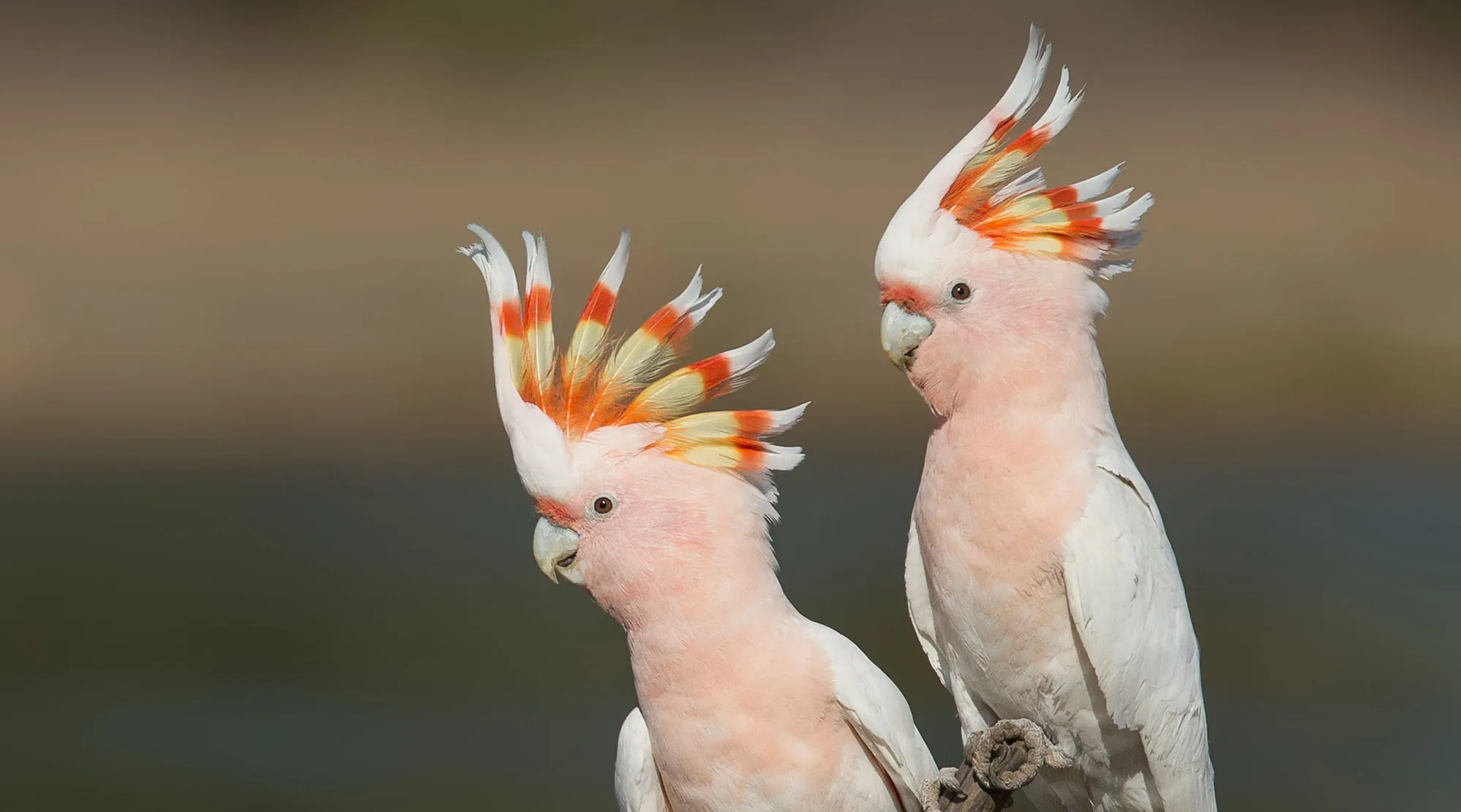Bird Overview
The Pink Cockatoo, a mainly white cockatoo with pink on the sides of its head, largely inhabits inland, arid areas. Populations of Pink Cockatoos have declined and their range has been reduced by land clearing, which has decreased the availability of nesting hollows.
Identification
The Pink Cockatoo is a mainly white cockatoo with pink on the sides of its head, around its neck, on its underbody, and under its wings. The crest appears white when folded but when raised and spread it has a broad red band with a yellow stripe through the middle. Their average size is 39cm, Their average weight is 370g.
Songs and Calls
A far-carrying, three-note creaking call. Bird call recorded by: Marc Anderson
Location
The Pink Cockatoo is mainly found in inland arid areas, but sometimes strays well outside its normal range. Due to habitat loss, their range has been reduced.
Habitat: Woodland
Habitat
Pink Cockatoos live mostly in semi-arid and arid areas, in dry woodlands, particularly Mallee. They are also found in stands of River Red Gum, Eucalyptus camaldulensis, or Black Box, E. largiflorens, and on sand plains and dunes. Sometimes they are found in other areas such as Acacia shrubland with a spinifex ground cover, or Banksia heathlands.
Behaviour
Pink Cockatoos may live in much the same area all year round if there is sufficient water. They can be partly nomadic in arid areas, moving in response to the availability of food and water.
Feeding
Pink Cockatoos live on a range of foods, seeds of grasses and herbaceous plants, fruit, roots, bulbs, and insect larvae.
Breeding
Pink Cockatoos nest in large hollows in trees. The eggs (clutch size is 3-4 eggs) are laid on a bed of decayed wood, woodchips and bark. Male and female will chew at a tree hollow to enlarge it, and both will sit on the eggs while incubating them (Incubation is 26 days). Both males and females feed and preen the chicks. Breeding season is August-November.



